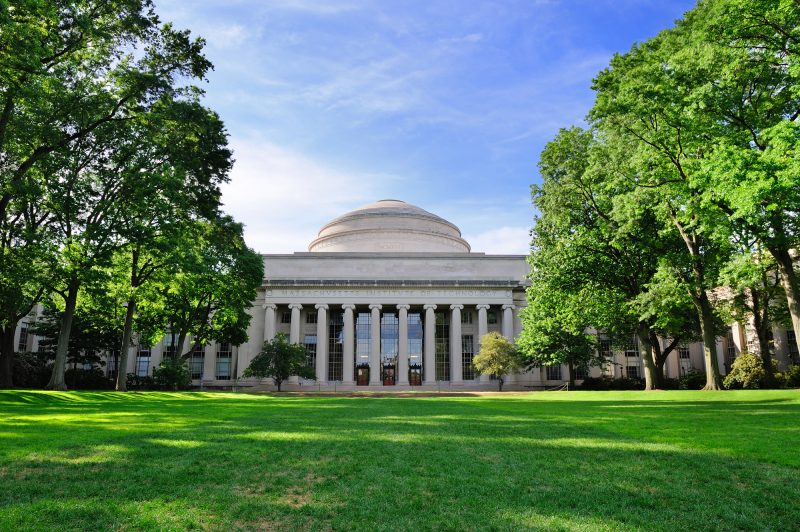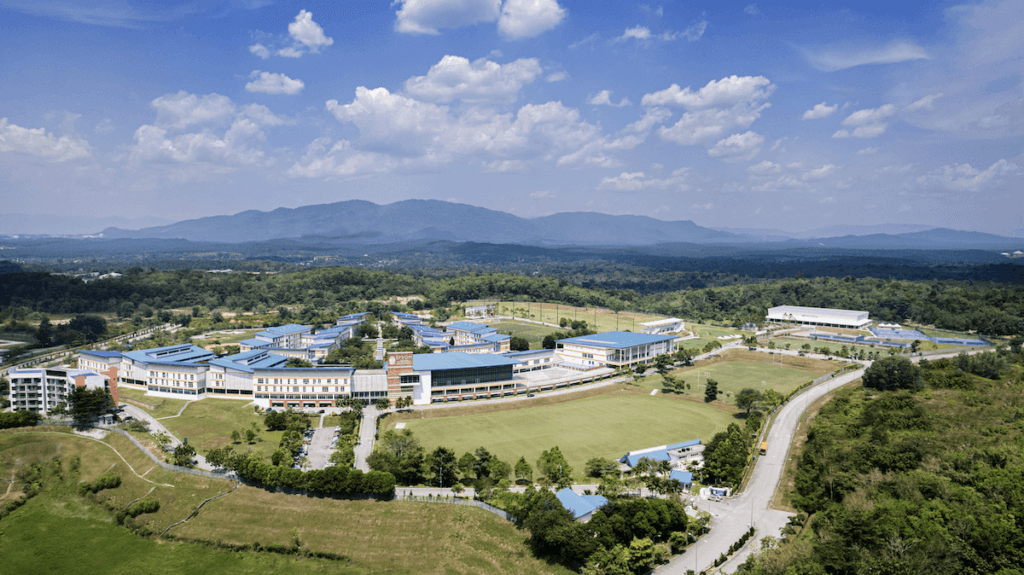Guide to US Applications • Undergraduate
What’s in a Name? Choosing Between Tech Schools
POSTED ON 07/06/2018 BY The Red Pen

William Shakespeare did indeed say, “What’s in a name?” Alongside life and literature, this also holds true for three colleges in the United States–Georgia Institute of Technology, California Institute of Technology and Massachusetts Institute of Technology. Shortlisting colleges can be complicated and for students who wish to study majors in engineering or technology abroad, going by the names of these institutes alone can be pretty misleading. Yes, the trio can be classified into the larger group called “tech schools,” but there are distinct lines that set them apart.
Here’s what sets Georgia Tech, Caltech and MIT apart from each other:
Georgia Tech
Georgia Institute of Technology (Georgia Tech or GT) is situated in Atlanta, Georgia, also known as a “city in a forest” because of an abundance of trees within city limits. A public university, GT has about 15,000 undergraduate students, of which 37 percent are female. With six colleges catering to various subjects such as computing, design, engineering, liberal arts, business and sciences, Georgia Tech is a premier institute of higher education in the US.
The beauty of the US education system is that at most institutions, a student is only required to declare a major after completing two years of general requirements. So students are encouraged to take classes across various fields and areas of interest to understand the range of options available better. Rahi Kapadia, who graduated from GT with a degree in industrial and systems engineering, says, “While my core curriculum comprised classes in calculus, physics, chemistry, and English, I also took classes in philosophy and American history, which I thoroughly enjoyed.”
Georgia Tech further distinguishes itself through programs related to women’s participation in the sciences. For example, the Center for the Study of Women, Science and Technology develops initiatives and collaborations that promote women faculty and staff interaction around research and practices in STEM.
For a student, however, who is about to make a college their home for the next four years, understanding campus life is important. Georgia Tech’s undergraduate population comprises nine percent international students and 46 percent students from the state of Georgia. The university is in the NCAA Division I, meaning that sports play an outsize role in the GT experience. To best learn about campus life from miles away, visit the institute’s blog, Humans of Georgia Tech, for honest, colourful and real accounts of life behind the yellow banner.
Caltech
On the west coast, the California Institute of Technology (Caltech) is situated in Pasadena, California, a suburb of Los Angeles. Regarded as one of the primary cultural centres of the San Gabriel Valley, Pasadenan has a Mediterranean climate and is home to The Rose Bowl Game, an annual college (American) football clash, usually held on January 1.
Located on a 124-acre campus, Caltech has a student-to-faculty ratio of 3:1. Of its 235-member freshman class of 2021, 46 percent comprises female students. Besides providing several engineering options, geological and planetary sciences and astronomy, the independent, private university also manages the Jet Propulsion Laboratory for NASA. It’s not surprising that Caltech’s faculty and students boast 38 Nobel prizes.
Innovation, too, is highly encouraged. Sudhi Mathur, who is studying physics at the institute, has a curriculum comprising theoretical classes such as quantum and statistical mechanics. She also takes higher-level astronomy, applied math and engineering. “In experimental physics classes, we re-create ground-breaking experiments. In my last class, I tried to determine whether high energy electrons are Newtonian or Relativistic,” she says.
Outside class, Caltech has various options for students ranging from athletics, recreation, performing and visual arts, clubs and other associations. However, the most interesting part of being a student here is its tradition of playing pranks on other colleges, especially rivals MIT. In 2014, the Prank Club of Caltech distributed heat-sensitive coffee mugs to MIT’s admitted students. Imagine the horror on their faces when the mugs ended up reading “Caltech” once filled with hot liquids!
MIT
If you’re seeking tradition and a college town, look no further than the Massachusetts Institute of Technology (MIT). On the east coast of the US is where Caltech’s favourite rival puts to practice its reputation for “creative irreverence”. Located in Cambridge, Massachusetts, MIT touts an “infinite corridor”, which allows the community to avoid New England’s bitterly cold weather while traversing across campus buildings 7, 3, 10, 4, and 8. In the fall 2017, the percentage of Asians among the institute’s international students was as high as 52 percent and that of female students pursuing an undergraduate degree was 46 percent.
MIT boasts 89 Nobel laureates and some of its most famous alumni include Buzz Aldrin, the second person to walk on the moon; Irene Pepperberg, scientist and active wildlife conservationist; Robin Chase, co-founder and former CEO of Zipcar; Kofi Annan, the seventh secretary-general of the United Nations; Amar Bose, founder of Bose Corporation; and Raghuram Rajan, former governor of the Reserve Bank of India.
With five schools catering to humanities, science, engineering, architecture and management, this private college is a dream school for students worldwide. Collaboration is key here as it is in most US colleges, but with a motto of mens et manus, which translates to mind and hand, the institute firmly believes in the fusion of academic knowledge with application. Ayush Sharma, who is an alumnus of MIT, says, “The common thread uniting MIT students is our passion for STEM and wanting to make an impact. It’s a great environment to collaborate and build things that aren’t feasible individually. MIT is unique in its position–a highly prestigious STEM-focused school with a strong maker culture. A heavy emphasis on data, evidence, and rigour is something that’s deeply rooted in MIT’s culture.”
MIT is a research hub, and undergraduates can plunge into this world through the Undergraduate Research Opportunities Program. Here’s where the first acrobatic robotic bird and the first free-standing hologram came to life. Having its location in the state of Massachusetts comes with a truckload of perks. The state is a global leader in biotechnology, engineering, higher education, finance and more, engaging its residents in a continuous intellectual exchange of ideas. Besides being home to stalwart institutes, Massachusetts also has many museums and historical sites that give students ample scope for leisure. For those interested in the outdoors, this state is also known for its long-distance hiking trails, including the Appalachian Trail and the New England National Scenic Trail and its proximity to ski resorts in Vermont and New Hampshire.
Entrepreneurship = Technologyn
What’s interesting to note about the two private institutions, Caltech and MIT, is the depth of technology-rooted entrepreneurship that is cultivated on campus. While discussing his new book, Burn the Business Plan: What Great Entrepreneurs Really Do with Knowledge@Wharton, Carl Schramm, an economist, Syracuse University professor and former President of the Ewing Marion Kauffman Foundation, a non-profit that encourages entrepreneurship, said, “If you look empirically at where entrepreneurs come from, if they have formal training, it’s not in entrepreneurship. It’s in engineering or the STEM subjects, the technical subjects. Many, many more entrepreneurs come out of MIT because it’s an engineering and technical school. Same thing for Caltech. Caltech doesn’t even teach entrepreneurship.” According to several sources, the revenues of companies founded by MIT put together would make up the 11th biggest economy in the world.
Here is a table contrasting the three institutions:
| Georgia Institute of Technology | California Institute of Technology | Massachusetts Institute of Technology | |
| Short form | Georgia Tech (GT) | Caltech | MIT |
| Region | Southeast | West coast | New England |
| Location | Atlanta, GA | Pasadena, CA | Cambridge, MA |
| Campus setting | City | Suburban | City |
| Public vs. Private? | Public | Private | Private |
| Student Body Size | 26,839 Total
15,489 Undergraduate 21,350 Graduate |
2,243 Total
966 Undergraduate 1,277 Graduate |
18,385 Total
11,466 Undergraduate 6,919 Graduate |
| Gender Distribution | 37% female
63% male |
36% female
64% male |
46% female
54% male |
| International Students | 600 Undergraduate (2%)
2,400 Graduate |
86 Undergraduate (9%)
114 Graduate (9%) |
470 Undergraduate (5%)
2,868 Graduate (41%) Note, for the class that entered in the fall of 2017, the international student admissions rate was 2.9 per cent versus 8.4 per cent for US citizens. |
| Student Teacher Ratio | 20:1 | 3:1 | 3:1 |
| Sports | NCAA Division I | NCAA Division III | NCAA Division III |
| Year Founded | 1888 | 1891 | 1861 |
| Mission |
Technological change is fundamental to the advancement of the human condition. The Georgia Tech community – students, staff, faculty, and alumni – will realize our motto of “Progress and Service” through effectiveness and innovation in teaching and learning, our research advances, and entrepreneurship in all sectors of society. We will be leaders in improving the human condition in Georgia, the United States, and around the globe. |
The mission of the California Institute of Technology is to expand human knowledge and benefit society through research integrated with education. We investigate the most challenging, fundamental problems in science and technology in a singularly collegial, interdisciplinary atmosphere while educating outstanding students to become creative members of society. |
The mission of MIT is to advance knowledge and educate students in science, technology, and other areas of scholarship that will best serve the nation and the world in the 21st century. The Institute is committed to generating, disseminating, and preserving knowledge, and to working with others to bring this knowledge to bear on the world’s great challenges. MIT is dedicated to providing its students with an education that combines rigorous academic study and the excitement of discovery with the support and intellectual stimulation of a diverse campus community. We seek to develop in each member of the MIT community the ability and passion to work wisely, creatively, and effectively for the betterment of humankind. |
As vastly different as the three institutes are from one another, each provides ample scope for research and doctoral programs. The Sloan School of Management gives MIT a strong international reputation for the social sciences and business-related studies, while Caltech is mostly known for engineering, computer science, and the physical sciences, which include physics and chemistry among others. The best part about Georgia Tech, however, is that it awards more engineering degrees to women than any other school.
For more help with your college list, get in touch with us.





